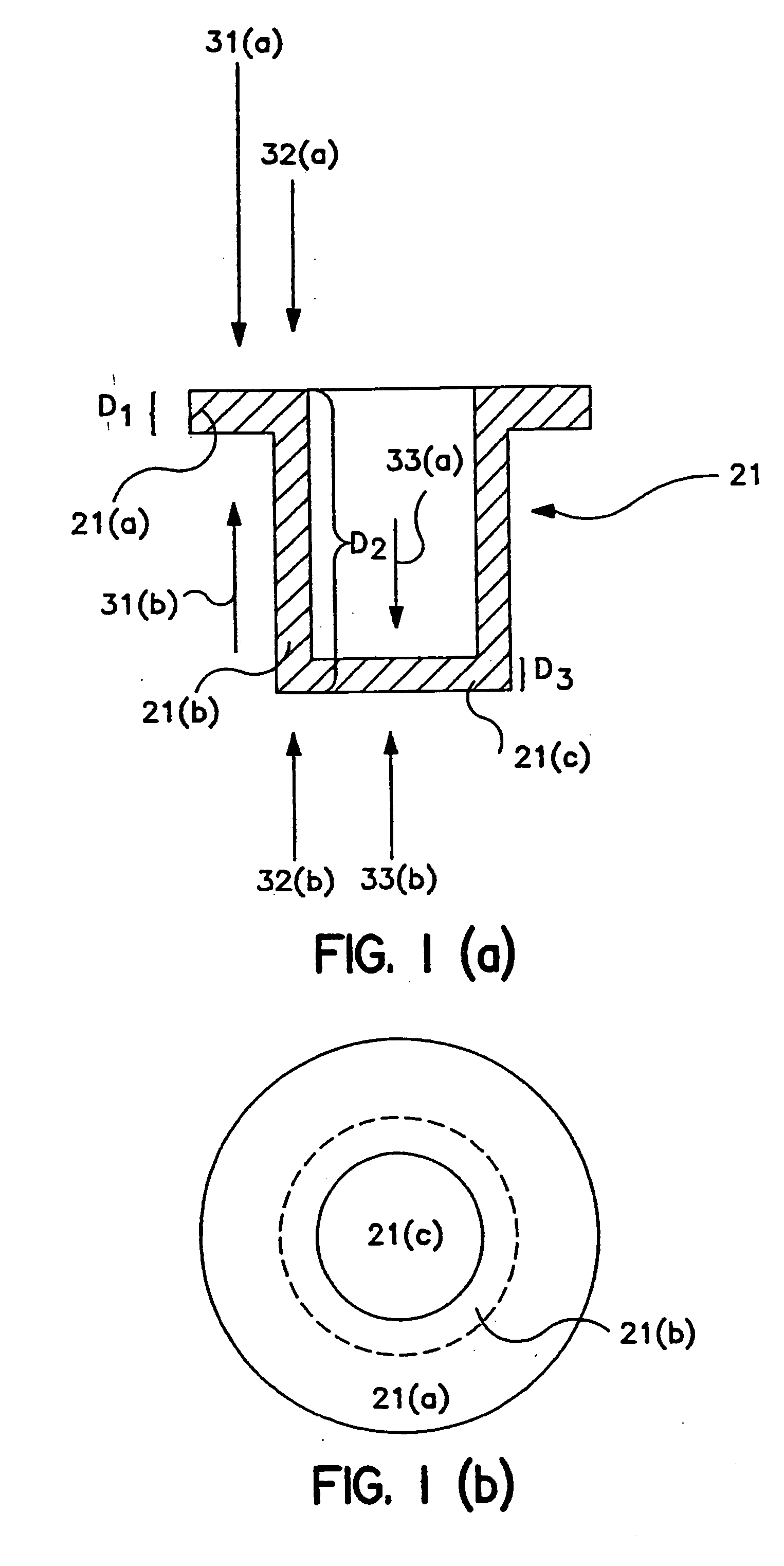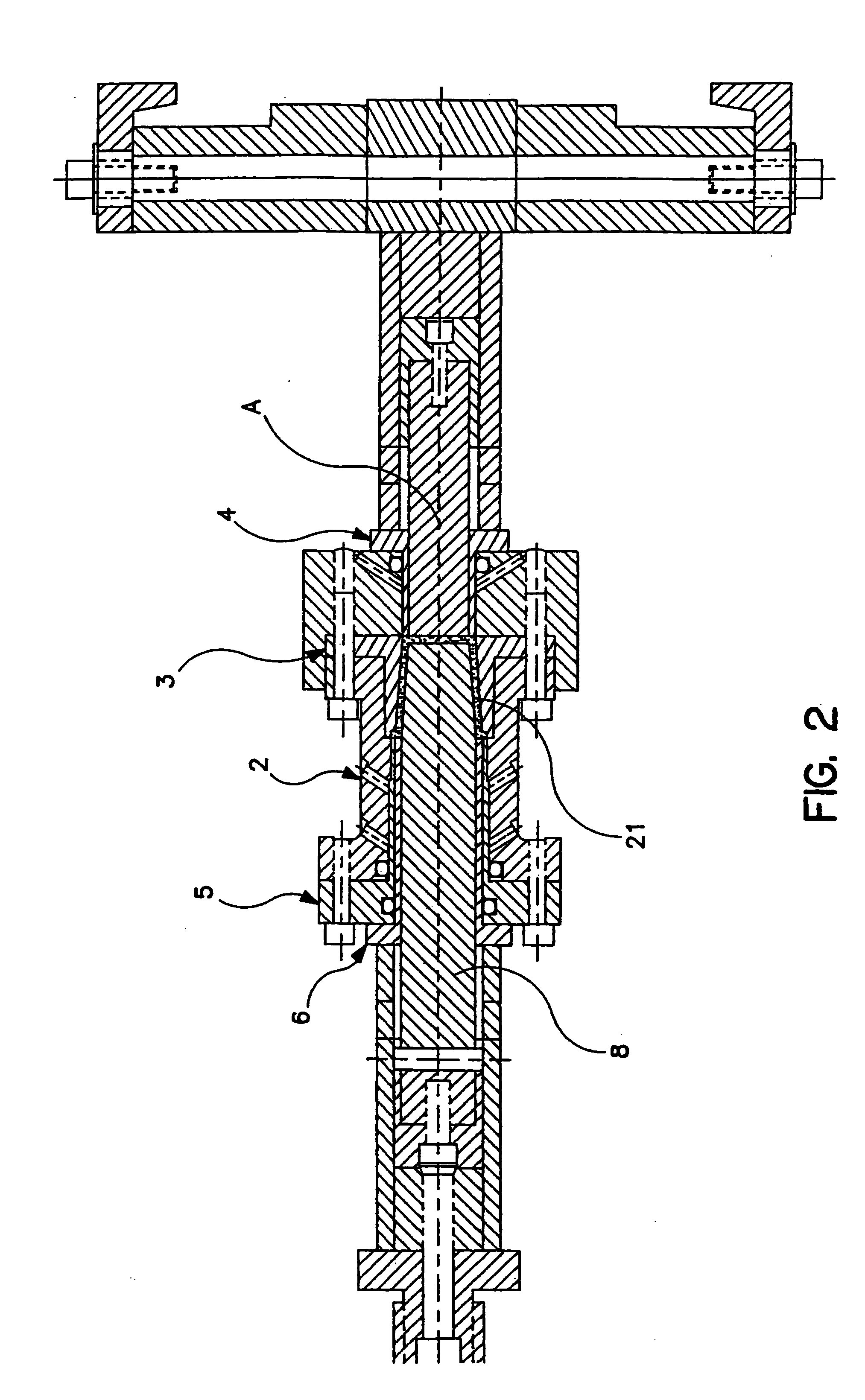Porous structures and methods for forming porous structures
a porous structure and porous technology, applied in the field of porous structures and methods for forming porous structures, can solve the problems of many polymer-based filter media degrading from the heat of such hot fluid streams, contaminants in process fluids can deposit onto semiconductor or semiconductor precursors, damage, etc., to achieve the effect of reducing pressure differential, increasing ductility, and increasing ductility
- Summary
- Abstract
- Description
- Claims
- Application Information
AI Technical Summary
Benefits of technology
Problems solved by technology
Method used
Image
Examples
example 1
[0061] A slurry is formed by mixing 1 liter of methanol and 5 grams of 934 Carbopol binder in a blender. Into this slurry mixture in sequence is blended 1.79 grams of Triton X surfactant, 80 grams of Oximide 4μ spacer particles, 160 grams of Inco 255 nickel powder having a nominal particle size of about 2.7μ, and 107 grams of Inco 210 nickel powder having a nominal particle size of about 7μ. This slurry mixture is mixed in the blender until the slurry has a relatively uniform composition and the presence of pockets and / or clumps in the slurry is minimized, e.g., about 10-20 minutes. Once the slurry appears to be substantially uniform, the slurry is deposited in the cavity of a female mold on a 0.5 micron Teflon membrane which rests on a screen in the female mold. The area of the female mold is about 2 inches by 5 inches and the slurry is deposited to a depth of about 0.25 inch. Once deposited, a countermold is inserted into the cavity containing the slurry. The weight of the counter...
example 2
[0062] 16.3 grams of the slurry mixture of Example 1 is deposited in a mold apparatus of the type shown in FIG. 2. The dies are positioned against the slurry to define a first portion, e.g., a brim portion, a second portion, e.g., a sidewall or body portion, and a third portion, e.g., an end portion. The dies are then actuated such that the does move at a rate of about 1 inch per minute or less to provide a 55% compression ratio for each of the first, second, and third portions. The dies forming the first and third portions move through an axial displacement of about 0.080 inch to form first and third portions having a thickness of about 0.065 inch and the dies forming the second portion move through a total axial displacement of about 1.375 inches to form a second portion having an axial dimension of about 1.19 inches. This uniform compression ratio provides a uniform porosity for each of the three portions. As the pistons are moved along their axial displacement, liquid from the s...
example 3
[0063] A slurry is formed by mixing about 1 liter DI water and 15 grams of 934 Carbopol binder in a blender. Into this slurry mixture is blended 35 grams of 1.5 micron 3-6-L stainless steel fibers. This slurry mixture is mixed in the blender until the slurry has a relatively uniform composition and the presence of pockets and / or clumps in the slurry is minimized. Then 148 grams of the slurry mixture is deposited in the cavity of a female mold on a 0.5 micron teflon membrane which rests, in turn, on a fine screen which rests on a coarser screen in the female mold. The inner diameter of the female mold is about 1.375 inches. A piston presses the slurry until the green structure is a 0.070 inch thick disk, removing some or most of the ill water and forming a green structure. The green disk is removed from the mold and air dried at room temperature. The dried green structure is then sintered in a hydrogen atmosphere at about 1800° F. for about 30 minutes. Sintering the metallic particle...
PUM
| Property | Measurement | Unit |
|---|---|---|
| Fraction | aaaaa | aaaaa |
| Fraction | aaaaa | aaaaa |
| Fraction | aaaaa | aaaaa |
Abstract
Description
Claims
Application Information
 Login to View More
Login to View More - R&D
- Intellectual Property
- Life Sciences
- Materials
- Tech Scout
- Unparalleled Data Quality
- Higher Quality Content
- 60% Fewer Hallucinations
Browse by: Latest US Patents, China's latest patents, Technical Efficacy Thesaurus, Application Domain, Technology Topic, Popular Technical Reports.
© 2025 PatSnap. All rights reserved.Legal|Privacy policy|Modern Slavery Act Transparency Statement|Sitemap|About US| Contact US: help@patsnap.com



